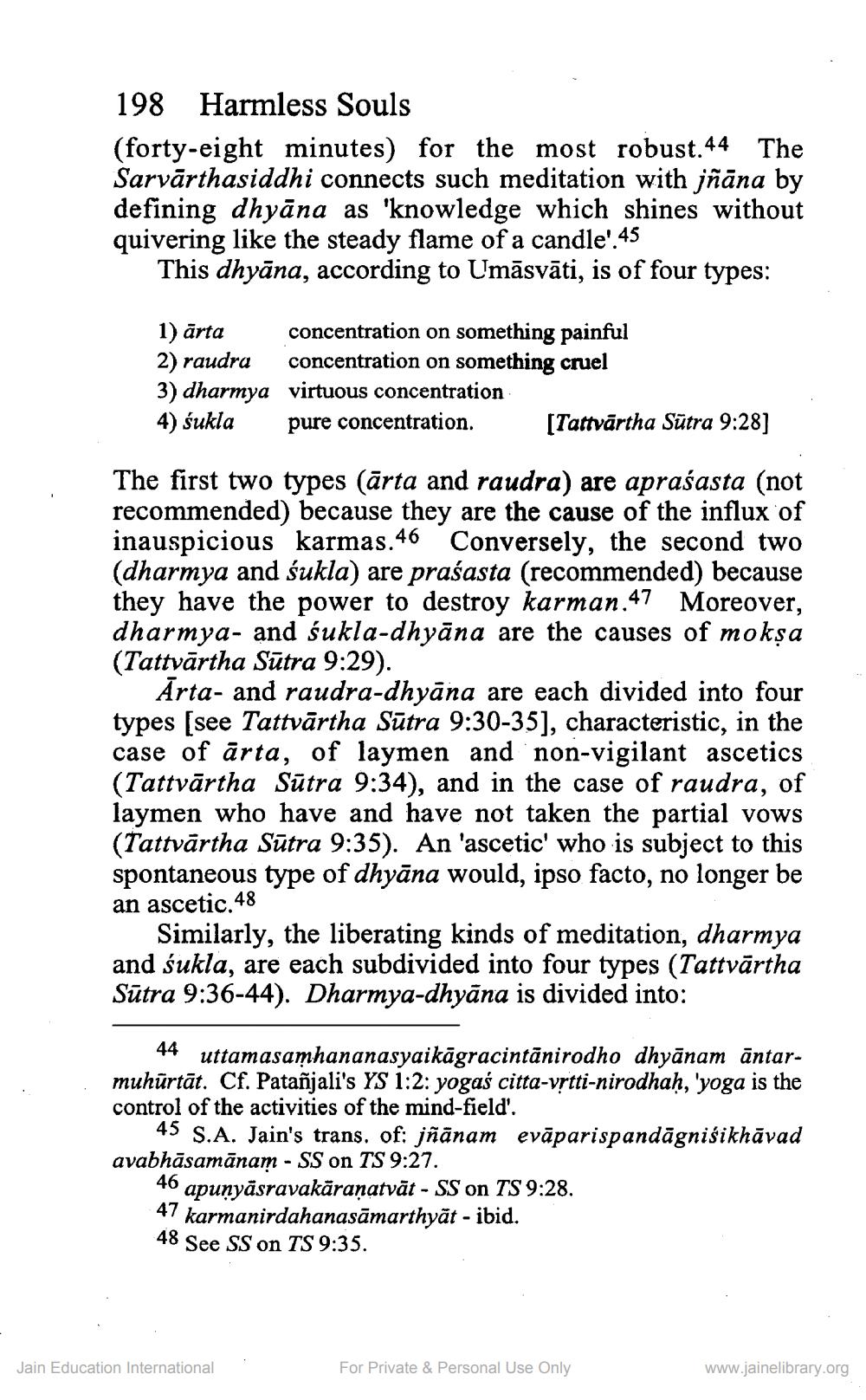________________
198 Harmless Souls
The
(forty-eight minutes) for the most robust.44 Sarvārthasiddhi connects such meditation with jñāna by defining dhyāna as 'knowledge which shines without quivering like the steady flame of a candle'.45
This dhyāna, according to Umāsvāti, is of four types:
1) ārta
2) raudra
3) dharmya virtuous concentration 4) sukla pure concentration.
concentration on something painful concentration on something cruel
[Tattvärtha Sutra 9:28]
The first two types (ārta and raudra) are aprašasta (not recommended) because they are the cause of the influx of inauspicious karmas.46 Conversely, the second two (dharmya and sukla) are prasasta (recommended) because they have the power to destroy karman.47 Moreover, dharmya- and śukla-dhyāna are the causes of mokṣa (Tattvärtha Sūtra 9:29).
Ārta- and raudra-dhyāna are each divided into four types [see Tattvārtha Sūtra 9:30-35], characteristic, in the case of arta, of laymen and non-vigilant ascetics (Tattvārtha Sutra 9:34), and in the case of raudra, of laymen who have and have not taken the partial vows (Tattvārtha Sūtra 9:35). An 'ascetic' who is subject to this spontaneous type of dhyāna would, ipso facto, no longer be an ascetic. 48
Similarly, the liberating kinds of meditation, dharmya and śukla, are each subdivided into four types (Tattvärtha Sūtra 9:36-44). Dharmya-dhyāna is divided into:
44 uttamasamhananasyaikāgracintānirodho dhyānam āntarmuhūrtāt. Cf. Patanjali's YS 1:2: yogaś citta-vṛtti-nirodhaḥ, 'yoga is the control of the activities of the mind-field'.
45 S.A. Jain's trans. of: jñānam eväparispandāgniśikhāvad
avabhāsamānam - SS on TS 9:27.
46
apuṇyasravakäraṇatvāt - - SS on TS 9:28. 47 karmanirdahanasāmarthyāt - ibid. 48 See SS on TS 9:35.
Jain Education International
For Private & Personal Use Only
www.jainelibrary.org




